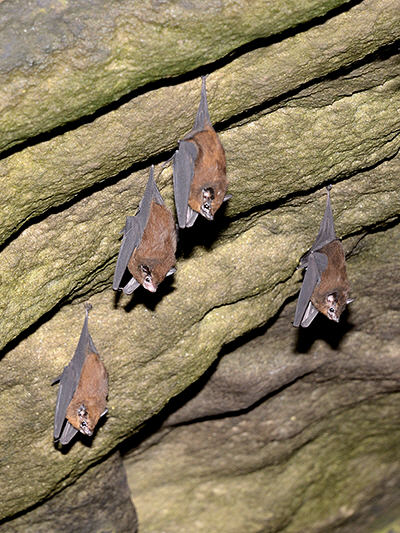
Fig 1
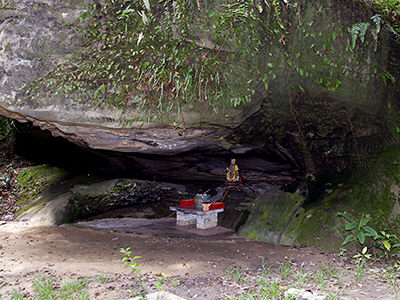
Fig 2
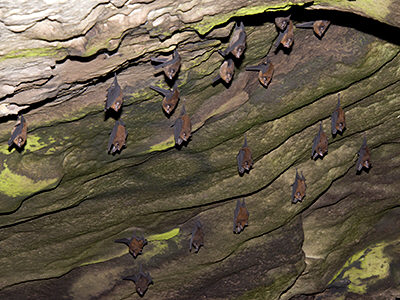
Fig 3
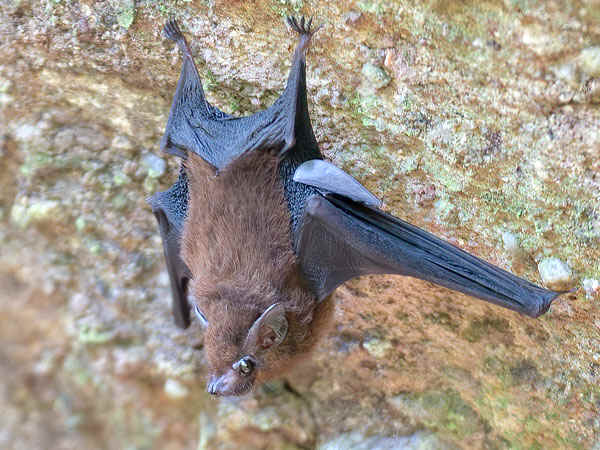
Fig 4
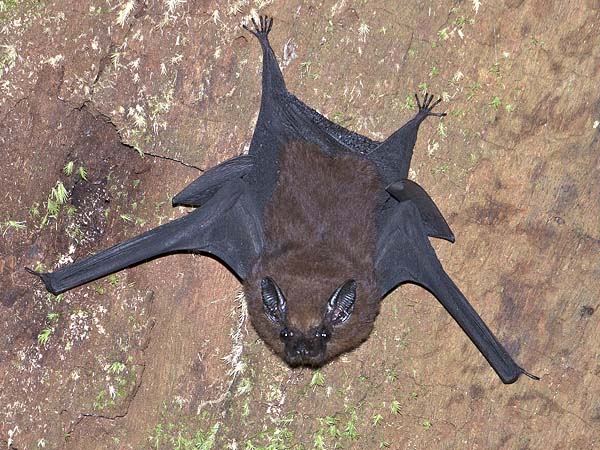
Fig 5
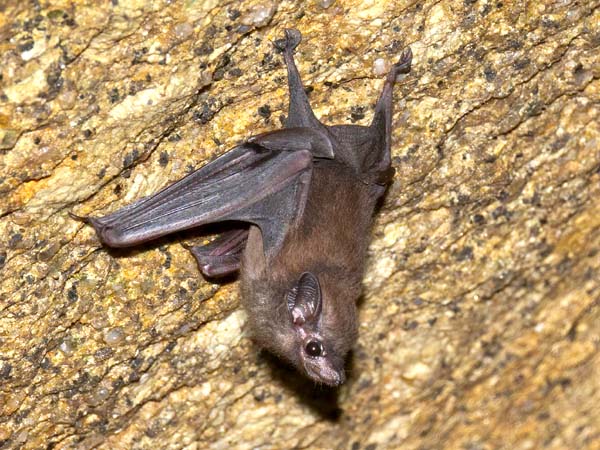
Fig 6
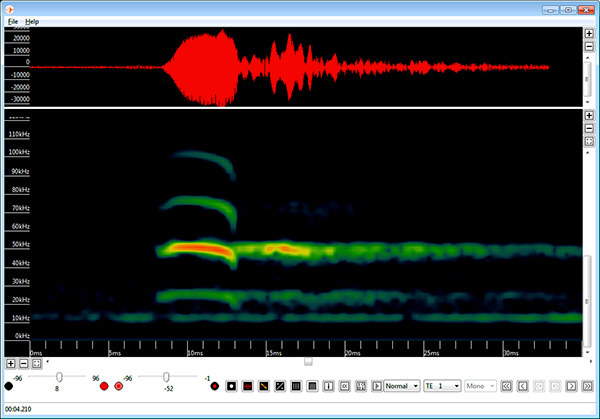
Fig 7
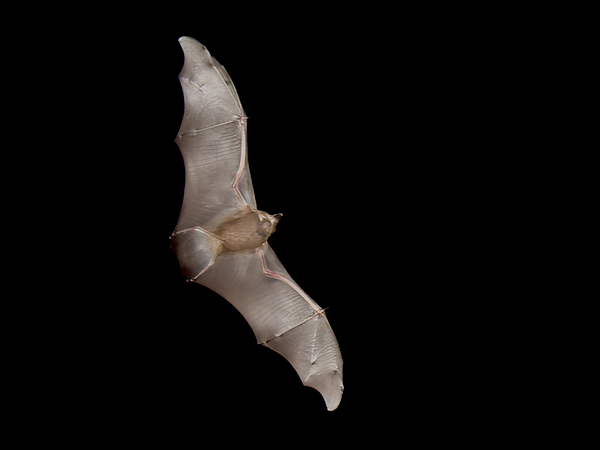
Fig 8
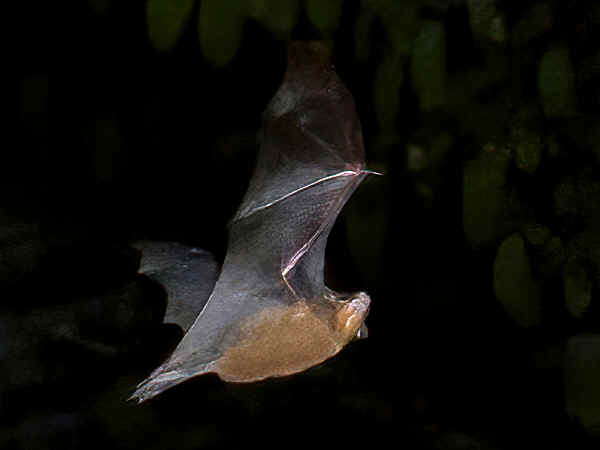
Fig 9
|
Order : CHIROPTERA
Family : Emballonuridae
Species : Emballonura monticola
Forearm Length : up to 4.5 cm
Weight : up to 5.5 grams
The genus Emballonura comprises eight species of sheath-tailed bat
which occur in Southeast Asia, eastern Indonesia, Papua New Guinea and
islands of the western Pacific Ocean.
Sheath-tailed bats are so-called because of their short tail which protrudes
from the interfemoral membrane connecting their hind legs; when the legs are
stretched out the tail disappears into the sheath.
Emballonura monticola (Lesser Sheath-tailed Bat) is the smallest of
the eight species, typically weighing around 5.5 grams.
This small bat roosts near cave
entrances, in rock crevices or under rock overhangs, in large tree holes and
beneath the buttresses of fallen trees. Some roosts, especially under rock
overhangs, may be well lit by day. If a roost is accidentally disturbed, an
audible click can be heard which alerts other bats to the presence of an
intruder.
Its fur colour is dark to reddish-brown, and its
wings are long and narrow. Its ears are triangular-shaped, its muzzle is
simple in form and its eyes are relatively large.
Emballonura monticola is a widespread inhabitant of lowland forest in
the Malay Peninsula (comprising southern Thailand, southern Myanmar,
Peninsular Malaysia and Singapore) and the islands of Sumatra, Java, Borneo
and Sulawesi. In Singapore it is now very rare.
Fig 1 : Roosting beneath a large sandstone boulder by day.
Fig 2 : A colony of Lesser Sheath-tailed Bat roost under this rocky
outcrop, used as a Buddhist shrine in Panti Forest, Johor, Peninsular
Malaysia..
Fig 3 : This roost has more than 20 individuals.
Fig 4 : Example from Gunung Pulai, Johor, Peninsular Malaysia roosting by
day at a brightly lit, rock overhang.
Fig 5 : Example clinging to a tree trunk at Panti Forest, Johor, Peninsular
Malaysia.
Fig 6 : This bat is roosting beneath a large granite boulder near a fast-flowing
mountain stream near Ipoh, Perak, Peninsular Malaysia.
Fig 7 : The ultrasonic call of Emballonura monticola is easily identified; it
comprises a typical hump-shaped call of around 8 milliseconds, at a
frequency of around 50 kHz, with multiple harmonics.
Fig 8 : Hunting for small flying insects at dusk, at the edge of Gunung
Pulai forest, Johor, Peninsular Malaysia.
Fig 9 : Foraging in a forest clearing near
Ipoh, Perak, Peninsular Malaysia.
References :
Francis, C.M. 2019. A Field Guide to the Mammals of South-east Asia. Second
Edition. New Holland. 416 pp.
Kingston, T., Lim B.L., Zubaid, A., 2006. Bats of Krau Wildlife
Reserve. Universiti Kebangsaan Malaysia.
|